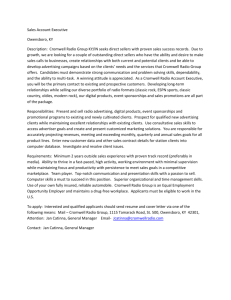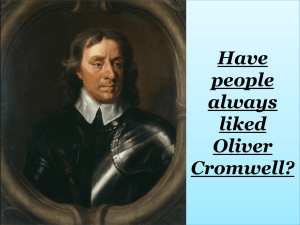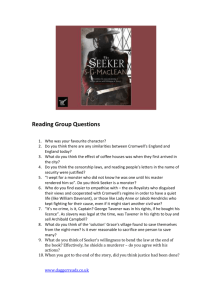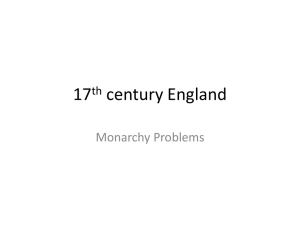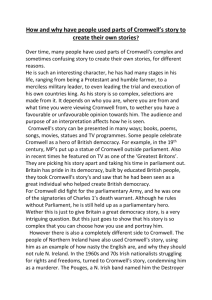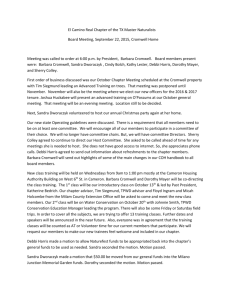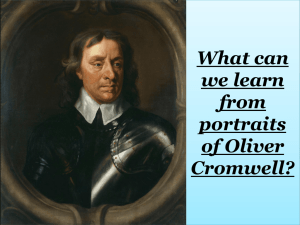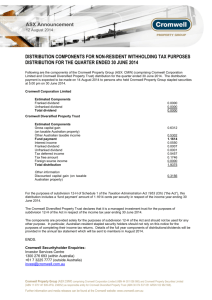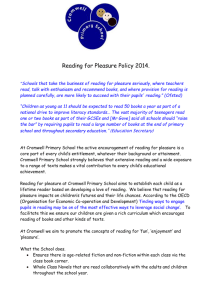Put the title Harold Godwinson in your exercise books
advertisement
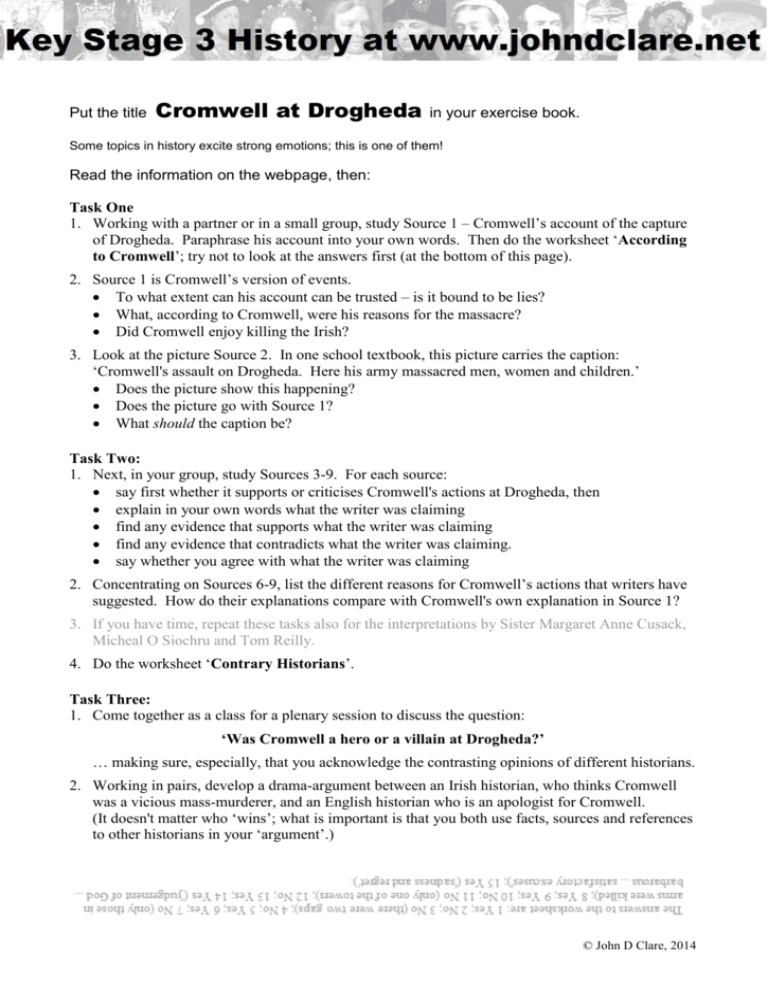
Put the title Cromwell at Drogheda in your exercise book. Some topics in history excite strong emotions; this is one of them! Read the information on the webpage, then: Task One 1. Working with a partner or in a small group, study Source 1 – Cromwell’s account of the capture of Drogheda. Paraphrase his account into your own words. Then do the worksheet ‘According to Cromwell’; try not to look at the answers first (at the bottom of this page). 2. Source 1 is Cromwell’s version of events. To what extent can his account can be trusted – is it bound to be lies? What, according to Cromwell, were his reasons for the massacre? Did Cromwell enjoy killing the Irish? 3. Look at the picture Source 2. In one school textbook, this picture carries the caption: ‘Cromwell's assault on Drogheda. Here his army massacred men, women and children.’ Does the picture show this happening? Does the picture go with Source 1? What should the caption be? Task Two: 1. Next, in your group, study Sources 3-9. For each source: say first whether it supports or criticises Cromwell's actions at Drogheda, then explain in your own words what the writer was claiming find any evidence that supports what the writer was claiming find any evidence that contradicts what the writer was claiming. say whether you agree with what the writer was claiming 2. Concentrating on Sources 6-9, list the different reasons for Cromwell’s actions that writers have suggested. How do their explanations compare with Cromwell's own explanation in Source 1? 3. If you have time, repeat these tasks also for the interpretations by Sister Margaret Anne Cusack, Micheal O Siochru and Tom Reilly. 4. Do the worksheet ‘Contrary Historians’. Task Three: 1. Come together as a class for a plenary session to discuss the question: ‘Was Cromwell a hero or a villain at Drogheda?’ … making sure, especially, that you acknowledge the contrasting opinions of different historians. 2. Working in pairs, develop a drama-argument between an Irish historian, who thinks Cromwell was a vicious mass-murderer, and an English historian who is an apologist for Cromwell. (It doesn't matter who ‘wins’; what is important is that you both use facts, sources and references to other historians in your ‘argument’.) © John D Clare, 2014 According to Cromwell After the battle of Drogheda, Cromwell wrote to Parliament, telling them HIS VERSION of what happened. His letter is printed as Source 1 on the webpage ‘An Everlasting Blot’. Look at the statements below. Did Cromwell say these things had happened? If you think he did say that, answer 'Yes'. If you think he did not say that, answer 'No'. Be careful, one or two of them are trick questions! 1. Cromwell asked the town to surrender. 2. The town surrendered. 3. The guns opened a gap in the walls. 4. Cromwell attacked early in the morning. 5. The Irish defended the town fiercely. 6. The Irish retreated into a strong place called the Mill-Mount. 7. Cromwell told his men to spare no-one. 8. Cromwell told his men to spare no-one who was carrying a weapon. 9. The English killed about two thousand men. 10. The men in the towers offered to surrender. 11. The Irish in the towers killed some of the English soldiers who were besieging them. 12. The soldiers in both towers were decimated (every tenth man was killed). 13. Some Irish who refused to surrender were decimated. 14. Cromwell thought the massacre was the right thing to do. 15. Cromwell regretted massacring the Irish. © John D Clare, 2014 According to Cromwell Historians disagree about Cromwell. Whatever one says, another will be sure to say something that contradicts it! In the left-hand column below are a series of statements that historians might make about the Drogheda massacre. Using the sources on the webpage ‘An Everlasting Blot’, can you find something to contradict each statement? To help you, the first one has been done for you: Statement Contradiction 1. Cromwell said that he killed 2,000 men. (Source 1) 2. Ormond said that the Irish laid down their weapons. (Source 3) Anthony Wood said he killed 3,000 men. (Source 4) Cromwell said that …………………………. ………………………………………………… ……..……………………………… (Source 1) 3. Cromwell said that he gave the order 'No quarter' in the heat of battle. Ormond said that …………………………… ………………………………………………… (Source 1) ……..……………………………… (Source 3) 4. Anthony Wood said that Cromwell killed women and children. (Source 4) J.A. Froude said that ………………………. ………………………………………………… ……..……………………………… (Source 6) 5. Cromwell said he gave the Irish a chance to surrender and they refused it. (Source 1) Ormond said that Cromwell promised …… 6. Antonia Fraser said that Cromwell lost his self-control. (Source 9) M. Elliot said that …………………………… ………………………………………………… ……..……………………………… (Source 3) ………………………………………………… ……..……………………………… (Source 7) 7. J.A. Froude said that Cromwell carried out the massacre to bring the rebellion to an end quickly. (Source 6) R.J. Unstead said that he did it because ... 8. Mercurius Politicus said that Drogheda 'crowned him in the opinion of the world'. (Source 5) Antonia Fraser thought that it …………….. 9. R.J. Unstead said that Drogheda was 'an everlasting blot on the name of a great man'. (Source 8) I think that …………………………………… ………………………………………………… ……..……………………………… (Source 8) ………………………………………………… ……..……………………………… (Source 9) ………………………………………………… ………………………………………………… © John D Clare, 2014
